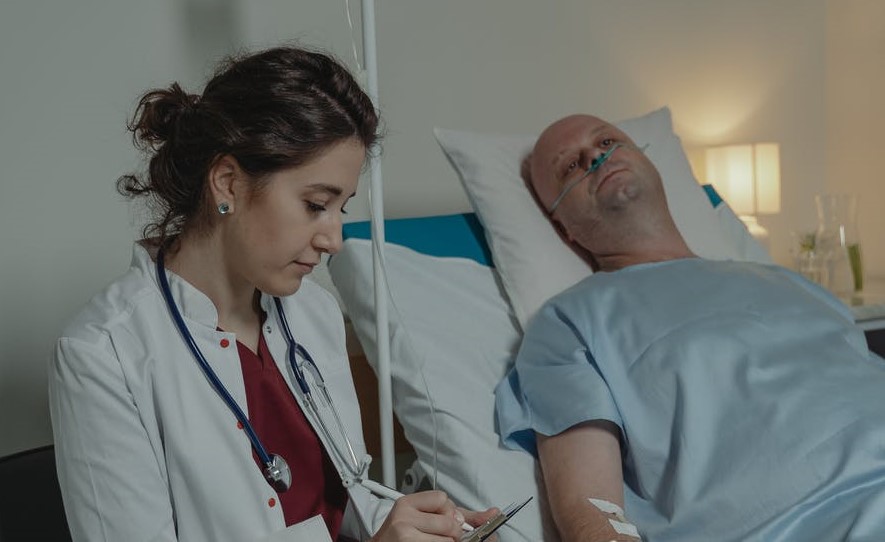In 2021, an estimated 1.9 million people in the U.S. will be diagnosed with cancer. Breast cancer continues to be the most common form of the disease, while lung cancer is the deadliest. The good news is that medical research advances over the last 20 years have dramatically improved the survival rate for cancer patients. Across all forms of cancer, the probability of death is low, just less than 5%.
Of course, those numbers aren’t comforting when you’re facing your own cancer diagnosis. You’re managing through many stressors, including the cost and impact of your treatment, concern for your family, and — somewhere on the list — uncertainty about your estate plan and life insurance. It’s natural to have questions about how your cancer affects an existing life insurance policy or your ability to get new coverage. Rest assured, we’ll cover those details for you here. Read on to find out if life insurance covers cancer, whether you can get life insurance while being treated for cancer, what your insurance prospects look like once you’re in remission, and what to do if you can’t afford your life insurance.
Does Life Insurance Cover Cancer?
Most standard life insurance policies will pay the agreed-upon death benefit if the insured dies of cancer. If you had the policy in force prior to your cancer diagnosis and the coverage is traditional life with no graded benefit schedule, your beneficiary should receive the death benefit as planned.
There are issues that would cause your insurer to deny payment on the death benefit, but they’re less common. One is if your coverage is for accidental death and dismemberment only. This type of life insurance won’t pay a death benefit if you die from cancer or any other illness — it pays out specifically when the cause of your death is an accident.
Your insurer will also deny a death benefit claim if you applied for the insurance after your diagnosis and failed to mention it on the application. The same is true if you lied about any other details or omitted material information. In any of these scenarios, the insurer will void the policy and no death benefit will be paid.
Another detail to check is whether the policy has a waiting period or graded benefit schedule. These are features commonly found on guaranteed-issue or no-exam life insurance policies. A waiting period is a window of time at the start of a policy during which no death benefits are paid. Waiting periods are often two years but can be longer or shorter. If you pass away during the waiting period, your beneficiary may receive the premiums you paid plus interest.
Graded benefits follow a schedule that increases the death benefit over time. The exact structure will be specific to the policy. As an example, the policy might pay 10% of the full benefit if you die in the first year, 20% in the second year, and so on. The full death benefit may not be available for five to seven years after policy issuance.
Can You Get Life Insurance With Cancer?
You can still get life insurance even if you’ve been recently diagnosed with cancer. You won’t have the full range of options, but the following types of life insurance may be available to you.
1. Guaranteed Life Insurance
You can buy guaranteed-issue life insurance without undergoing a medical exam or answering any questions about your health. The death benefits are typically less than $25,000 and intended to cover your burial costs primarily. This type of policy will have a waiting period. Guaranteed life insurance is most widely available for applicants who are between 50 and 80 years old.
2. Group Insurance
Group life insurance is available through work or through member organizations. There is usually no medical exam required for standard levels of coverage. Ask your employer or your spouse’s employer what your options are.
3. Self Insurance
If your estimated lifespan is shorter than two years, you might consider self-insuring instead of buying a guaranteed policy with a waiting period. Simply take the funds that would have gone to premium payments and instead save them to a high-rate savings account. You can name a beneficiary on the account, so the funds don’t go to probate.
Alternatively, you might have some options to adjust an existing life insurance policy. You may be able to convert your term policy into a permanent one or add riders to broaden your coverage without a medical exam. Review your policy documentation to confirm which strategies are available.
Getting Life Insurance After Cancer
Your life insurance options will broaden once you are healthy again. You will pay higher premiums given your health history, but you should eventually qualify for standard term life or permanent life coverage. The exception would be if you had severe, late-stage cancer combined with other serious health conditions. In that extreme case, you may continue to be limited to a guaranteed issue policy.
Otherwise, you should have access to traditional life coverage after you’ve been in remission for some time. This timeline could be one year or 10 years, depending on the type of cancer you had and the severity of your case.
Life Insurance If You Have a Family History of Cancer
A family history of cancer does complicate your ability to get life insurance. You will see higher insurance premiums and you are more likely to be denied coverage. The proximity of your relatives who’ve been diagnosed with cancer matters, as well as the types of cancers that have appeared in your family. The insurer will also want to know how old your relatives were when they were diagnosed. Closer relatives diagnosed at younger ages are riskier in the eyes of a life insurance provider. Breast cancer, bone cancer, and brain cancer also carry higher risk since these are known genetic cancers.
If you are currently healthy and one insurer denies your coverage based on family history, just keep shopping. You shouldn’t have to resort to guaranteed issue coverage, but you may have to fill out a few applications before you are accepted.
What If You Can No Longer Afford Your Life Insurance Policy?
If you can no longer afford your life insurance policy following a cancer diagnosis, you may have the option to sell your coverage in a life or viatical settlement. You would pursue a life settlement if your estimated lifespan is longer than two years. You’d explore a viatical settlement if you are terminally ill with less than two years to live. Either transaction will generate several times more cash than surrendering your insurance back to the provider.
To find out how much your life insurance may be worth, contact Harbor Life Settlements today. As experts in life and viatical settlements, we can answer all your questions about how these transactions work and how much cash you should expect to receive. If you decide to move forward and sell your policy, we’ll even manage the process for you, from start to finish.









